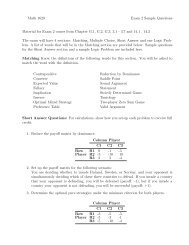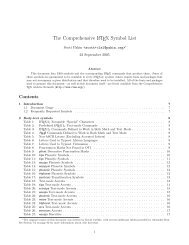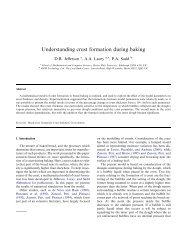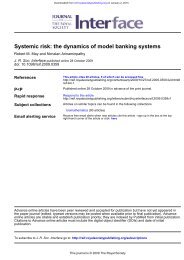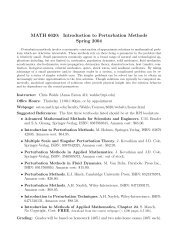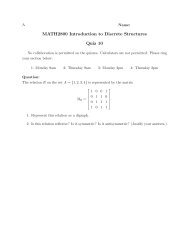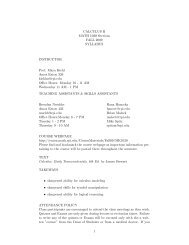ILOG CPLEX C++ API 9.0 Reference Manual
ILOG CPLEX C++ API 9.0 Reference Manual
ILOG CPLEX C++ API 9.0 Reference Manual
Create successful ePaper yourself
Turn your PDF publications into a flip-book with our unique Google optimized e-Paper software.
IloCplex<br />
This method adds con as a cut to the invoking IloCplex object. The cut is not<br />
extracted as the regular constraints in a model, but is only copied when invoking the<br />
method addCut. Thus, con may be deleted or modified after addCut has been called<br />
and the change will not be notified to the invoking IloCplex object.<br />
When columns are deleted from the extracted model, all cuts are deleted as well and<br />
need to be reextracted if they should be considered. Cuts are not part of the root<br />
problem, but are considered on an as-needed basis. A solution computed by IloCplex<br />
is guaranteed to satisfy all cuts added with this method.<br />
public const IloConstraintArray addCuts(const IloConstraintArray con)<br />
This method adds the constraints in con as cuts to the invoking IloCplex object.<br />
Everything said for addCut applies equally to each of the cuts given in array con.<br />
public IloConstraint addLazyConstraint(IloConstraint con)<br />
Note:This is an advanced method. Advanced methods typically demand a profound<br />
understanding of the algorithms used by <strong>ILOG</strong> <strong>CPLEX</strong>. Thus they incur a higher<br />
risk of incorrect behavior in your application, behavior that can be difficult to<br />
debug. Therefore, <strong>ILOG</strong> encourages you to consider carefully whether you can<br />
accomplish the same task by means of other methods instead.<br />
This method adds con as a lazy constraint to the invoking IloCplex object. The<br />
constraint con is copied into the lazy constraint pool; the con itself is not part of the<br />
pool, so changes to con after it has been copied into the lazy constraint pool will not<br />
affect the lazy constraint pool.<br />
Lazy constraints added with addLazyConstraint are typically constraints of the<br />
model that are not expected to be violated when left out. The idea behind this is that the<br />
LPs that are solved when solving the MIP can be kept smaller when these constraints are<br />
not included. IloCplex will, however, include a lazy constraint in the LP as soon as it<br />
becomes violated. In other words, the solution computed by IloCplex makes sure that<br />
all the lazy constraints that have been added are satisfied.<br />
By contrast, if the constraint does not change the feasible region of the extracted model<br />
but only strengthens the formulation, it is referred to as a user cut. While user cuts can<br />
be added to IloCplex with addLazyConstraint, it is generally preferable to do<br />
so with addUserCuts. It is an error, however, to add lazy constraints by means of the<br />
method addUserCuts.<br />
When columns are deleted from the extracted model, all lazy constraints are deleted as<br />
well and need to be recopied into the lazy constraint pool. Use of this method in place of<br />
addCuts allows for further presolve reductions<br />
This method is equivalent to addCut.<br />
<strong>ILOG</strong> <strong>CPLEX</strong> <strong>C++</strong> <strong>API</strong> <strong>9.0</strong> REFERENCE M ANUAL 53


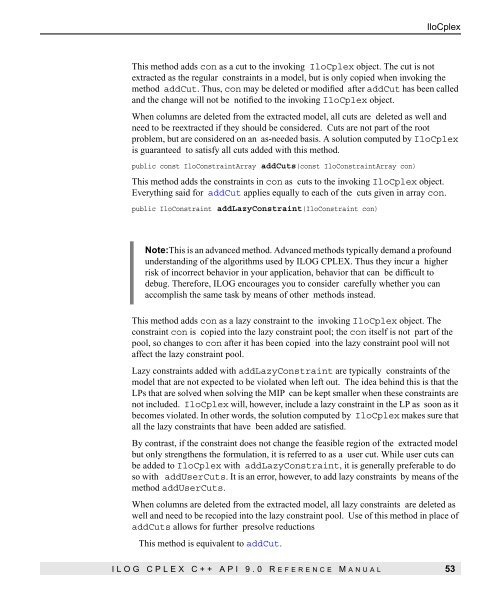
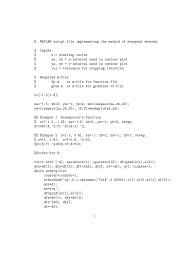

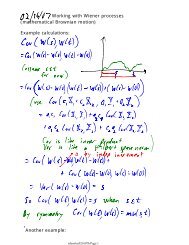

![MATH 1500 Sample Questions Exam 2 1. [3.7] A 10-ft plank is ...](https://img.yumpu.com/43861920/1/190x245/math-1500-sample-questions-exam-2-1-37-a-10-ft-plank-is-.jpg?quality=85)
